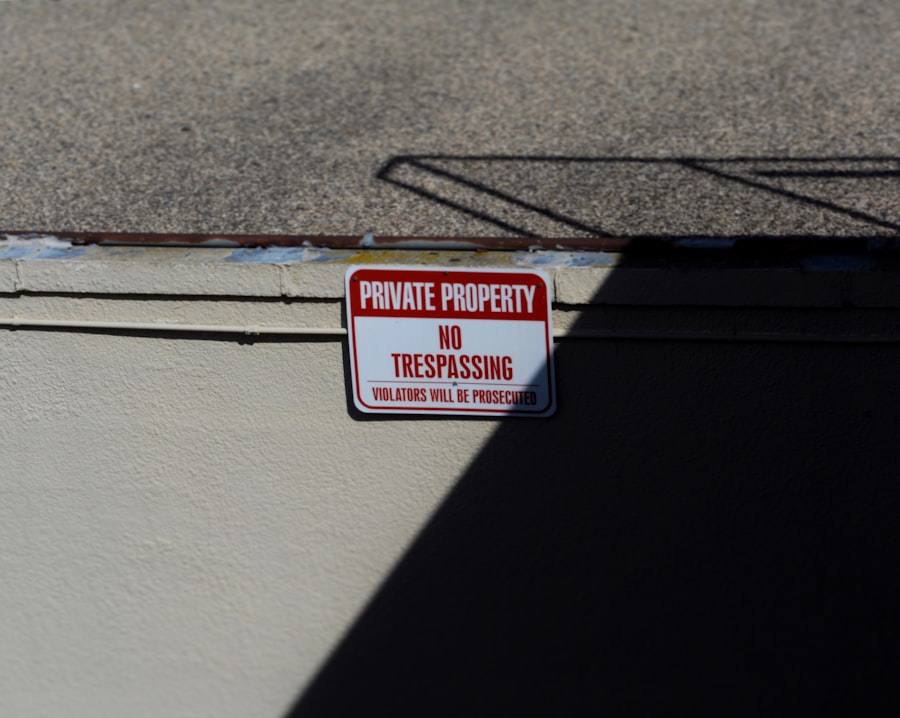As I delve into the world of web servers, I find that the concept of a reverse proxy is both fascinating and essential for modern web architecture. A reverse proxy acts as an intermediary for requests from clients seeking resources from servers. Unlike a traditional forward proxy, which serves as a gateway for clients to access the internet, a reverse proxy sits in front of one or more web servers, handling incoming requests and directing them to the appropriate server.
This setup not only enhances security by hiding the identity of the backend servers but also improves load balancing and can cache content to speed up response times. OpenLiteSpeed, an open-source web server, has gained popularity for its high performance and low resource consumption. It is designed to handle dynamic content efficiently, making it an excellent choice for applications that require quick response times.
The combination of OpenLiteSpeed with a reverse proxy setup allows me to leverage its capabilities while ensuring that my web applications are secure, scalable, and capable of handling high traffic loads. Understanding these components is crucial as I embark on the journey of setting up my own reverse proxy using OpenLiteSpeed.
Key Takeaways
- Reverse proxy acts as an intermediary between clients and servers, providing additional security and performance benefits.
- OpenLiteSpeed is a lightweight and open-source web server that can be used as a reverse proxy to improve server performance.
- Installing OpenLiteSpeed on your server is a straightforward process and can be done using package managers or source installation.
- Configuring OpenLiteSpeed as a reverse proxy involves setting up listeners, defining backend servers, and creating rewrite rules.
- Setting up virtual hosts and listeners allows you to host multiple websites on a single server and manage incoming traffic efficiently.
- Configuring SSL for secure connections involves obtaining and installing SSL certificates, and enabling HTTPS for encrypted communication.
- Optimizing OpenLiteSpeed for performance includes caching, compression, and tuning server settings for better response times.
- Testing and troubleshooting your reverse proxy setup is essential to ensure proper functionality and address any issues that may arise.
- Best practices for maintaining and securing your reverse proxy with OpenLiteSpeed include regular updates, monitoring, and implementing security measures such as WAF and DDoS protection.
Installing OpenLiteSpeed on your Server
The first step in my journey is to install OpenLiteSpeed on my server. I begin by choosing a suitable server environment, typically a Linux distribution like Ubuntu or CentOS, as these are well-supported by OpenLiteSpeed. The installation process is straightforward; I start by updating my package manager to ensure that I have the latest software versions.
Once my system is up to date, I can download the OpenLiteSpeed installation package directly from the official website. After downloading the package, I follow the installation instructions provided in the documentation. This usually involves extracting the files and running a series of commands in the terminal.
I appreciate how OpenLiteSpeed provides a user-friendly web-based interface for configuration, which simplifies management tasks significantly. Once the installation is complete, I can start the OpenLiteSpeed service and verify that it is running correctly by accessing the default web page through my browser. This initial setup lays the foundation for configuring OpenLiteSpeed as a reverse proxy.
Configuring OpenLiteSpeed as a Reverse Proxy

With OpenLiteSpeed successfully installed, I turn my attention to configuring it as a reverse proxy. This process involves setting up virtual hosts that will handle incoming requests and direct them to the appropriate backend servers. I begin by accessing the OpenLiteSpeed web admin interface, where I can create a new virtual host specifically for my reverse proxy configuration.
In this interface, I define the necessary parameters such as the domain name, document root, and other settings that dictate how requests will be processed. One of the key features I utilize is the ability to set up backend servers within the virtual host configuration. By specifying the IP addresses and ports of my backend servers, I can ensure that requests are routed correctly.
Additionally, I configure load balancing options to distribute traffic evenly across multiple servers, enhancing performance and reliability.
Setting Up Virtual Hosts and Listeners
As I continue with my configuration, setting up virtual hosts and listeners becomes paramount in ensuring that my reverse proxy functions effectively. A listener in OpenLiteSpeed is responsible for accepting incoming connections on specified IP addresses and ports. I create a listener for HTTP traffic on port 80 and another for HTTPS on port 443, allowing me to handle both secure and non-secure requests seamlessly.
Next, I associate my virtual hosts with these listeners. This step is crucial because it determines how incoming requests are processed based on their destination. By linking my virtual hosts to the appropriate listeners, I can ensure that traffic is directed correctly based on whether it is secure or not.
This setup not only streamlines request handling but also enhances security by allowing me to implement SSL configurations later on.
Configuring SSL for Secure Connections
Security is a top priority in today’s digital landscape, so configuring SSL for secure connections is an essential step in my reverse proxy setup with OpenLiteSpeed. To begin this process, I obtain an SSL certificate from a trusted certificate authority (CA). There are various options available, including free certificates from Let’s Encrypt or paid certificates that offer additional features.
Once I have my SSL certificate ready, I return to the OpenLiteSpeed web admin interface to configure SSL settings for my virtual host. This involves uploading the certificate files and specifying their locations within the configuration settings. Additionally, I enable SSL support for my listener on port 443, ensuring that all secure connections are properly handled.
After saving these changes, I restart the OpenLiteSpeed service to apply the new configurations.
Optimizing OpenLiteSpeed for Performance

With my reverse proxy configured and SSL in place, I now focus on optimizing OpenLiteSpeed for performance. One of the standout features of OpenLiteSpeed is its ability to handle high traffic loads efficiently, but there are several tweaks I can make to enhance its performance further. First, I explore caching options available within OpenLiteSpeed.
By enabling caching for static content such as images, CSS files, and JavaScript, I can significantly reduce load times for users. Additionally, I take advantage of OpenLiteSpeed’s built-in support for HTTP/2, which allows for multiplexing multiple requests over a single connection. This feature improves loading speeds and enhances user experience by reducing latency.
Furthermore, I consider adjusting worker processes and connection limits based on my server’s resources and expected traffic patterns. By fine-tuning these settings, I can ensure that OpenLiteSpeed operates at peak performance even during high-traffic periods.
Testing and Troubleshooting your Reverse Proxy Setup
After completing my configuration and optimization efforts, it’s time to test and troubleshoot my reverse proxy setup with OpenLiteSpeed. The first step in this process involves checking whether all components are functioning as expected. I use various online tools to test my website’s performance and ensure that requests are being routed correctly through the reverse proxy.
If any issues arise during testing—such as slow response times or errors—I delve into the OpenLiteSpeed error logs for insights into what might be going wrong. These logs provide valuable information about failed requests or misconfigurations that need addressing. Additionally, I utilize tools like cURL to simulate requests directly to my server and analyze responses to pinpoint any potential bottlenecks or misconfigurations in my setup.
Best Practices for Maintaining and Securing your Reverse Proxy with OpenLiteSpeed
As I reflect on my journey with OpenLiteSpeed and reverse proxy configurations, I recognize that maintaining security and performance is an ongoing process. One of the best practices I adopt is regularly updating both OpenLiteSpeed and any associated software components to ensure that I benefit from the latest security patches and performance improvements. Moreover, implementing strict firewall rules helps protect my server from unauthorized access while allowing legitimate traffic through.
Regularly monitoring server logs also plays a crucial role in identifying potential security threats or performance issues before they escalate into significant problems. By following these best practices and staying informed about emerging security threats and performance optimization techniques, I can ensure that my reverse proxy setup remains robust and efficient over time. In conclusion, setting up a reverse proxy with OpenLiteSpeed has been an enlightening experience that has deepened my understanding of web server architecture and performance optimization.
From installation to configuration and ongoing maintenance, each step has provided valuable insights into creating a secure and efficient web environment capable of handling modern demands.
If you’re interested in setting up a reverse proxy with OpenLiteSpeed, you might also find it useful to explore additional resources that can enhance your understanding of web server configurations. A related article that could provide further insights is available on The Sheryar’s blog. This blog covers a range of topics that can complement your knowledge of server management and optimization. For more detailed information, you can visit the article by following this link.
FAQs
What is a reverse proxy?
A reverse proxy is a server that sits between clients and backend servers, forwarding client requests to the appropriate backend server and returning the response to the client.
What is OpenLiteSpeed?
OpenLiteSpeed is a high-performance, open-source web server software that is designed to be lightweight and efficient. It is known for its speed and scalability.
Why would I want to set up a reverse proxy with OpenLiteSpeed?
Setting up a reverse proxy with OpenLiteSpeed can help improve security, load balancing, and caching for your web applications. It can also help with managing multiple backend servers and simplifying the overall architecture of your web infrastructure.
What are the steps to set up a reverse proxy with OpenLiteSpeed?
The steps to set up a reverse proxy with OpenLiteSpeed typically involve configuring the server settings, creating virtual hosts, and setting up rewrite rules to proxy requests to the backend servers. Detailed instructions can be found in the article.
What are the benefits of using OpenLiteSpeed as a reverse proxy?
OpenLiteSpeed offers high performance, low resource usage, and easy configuration, making it an ideal choice for setting up a reverse proxy. It also provides support for various protocols and features that can enhance the performance and security of your web applications.
